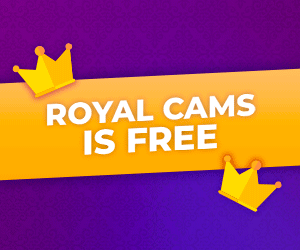Imagine walking into a bustling marketplace where everyone speaks your language, the entry fee is a handshake, and the first sale is just a conversation away. That’s Fiverr in 2025—a digital agora where first-time freelancers aren’t just allowed to thrive; they’re given a roadmap to do so. While platforms like Upwork demand years of experience or LinkedIn-style polish, Fiverr thrives on raw creativity and the kind of scrappy energy only beginners bring. Let’s unpack why it’s the ultimate launchpad for anyone dipping their toes into freelancing, even if your current skills feel more “kitchen-table hobby” than “six-figure career.”
The Zero-Barrier Gateway
Starting a freelance career often feels like applying for a job that requires five years of experience to get five years of experience. Fiverr flips this script. No résumés, no cover letters, no portfolio required. You can create a gig offering anything—from “I’ll name your pet goldfish” to “I’ll design a logo while you nap.” This low-stakes environment lets beginners experiment without the pressure of perfection. Take Jess, a college student who started by editing TikTok videos for $10. Two years later, she’s charging $500 per reel and mentoring others. “Fiverr doesn’t care if you’re 16 or 60,” she says. “It cares if you can solve a problem.”
The signup process is equally forgiving. No lengthy verification hoops—just an email, a password, and a gig title. Compare this to Upwork, where approval rates hover around 20%, and you’ll see why rookies flock here.
The “Micro-Skill” Goldmine
Fiverr’s magic lies in its ability to turn quirks into cash. Unlike traditional platforms that prioritize formal expertise, Fiverr rewards niche, oddball, or even oddly specific skills. Think:
“I’ll Photoshop your cat into a Renaissance painting.”
“I’ll write a breakup text that doesn’t make you sound like a jerk.”
“I’ll record a birthday rap in the voice of Darth Vader.”
These gigs thrive because they target emotional needs, not just tasks. Beginners can leverage hobbies or side hustles they’d never list on a résumé. A stay-at-home mom turned her knack for organizing toy bins into a $3k/month gig decluttering clients’ Google Drives. “I didn’t think ‘messy folders’ counted as a skill,” she laughs. “But Fiverr’s buyers showed me otherwise.”
The Algorithm That Loves Underdogs
Fiverr’s search algorithm in 2025 isn’t rigged for top sellers. Instead, it prioritizes newcomers through “Fresh Talent” boosts. For the first 30 days, your gig gets prime visibility, appearing alongside established sellers. This levels the playing field, letting beginners snag orders before reviews pile up.
The key? Use those 30 days wisely. Update your gig daily—even tiny tweaks like adding a new FAQ or swapping a keyword signal activity to the algorithm. One seller landed her first order by changing her gig title from “I’ll design a logo” to “I’ll design a logo that tells your story in 3 seconds.” The result? A 200% spike in clicks.
Reviews Aren’t Just Stars—They’re Stepping Stones
On Upwork, a single 4-star review can tank your profile. Fiverr’s review culture is more forgiving. Buyers expect quirks and charm, not corporate polish. Early reviews often read like fan mail: “She fixed my dating profile AND my self-esteem!” or *“This guy turned my grocery list into a sonnet. 10/10.”*
For beginners, this feedback isn’t just validation—it’s free marketing. Each review adds keywords to your profile, making it easier for buyers to find you. A voice actor noticed his gig ranking higher after a client wrote, “He nailed the ‘friendly robot’ vibe I wanted.” Suddenly, he was the go-to for “robotic voiceovers,” a niche he’d never considered.
The “Learn as You Earn” Mentorship
Fiverr’s 2025 ecosystem includes built-in training disguised as gig requirements. The platform nudges you to:
Add FAQs: Forces you to anticipate client questions (and realize you know more than you think).
Set realistic deadlines: Teaches time management without the burnout.
Offer tiers: Reveals what clients value most (hint: speed often trumps price).
These micro-lessons build business savvy organically. A teen offering resume edits learned to upsell after noticing clients loved her “Interview Prep Cheat Sheet” add-on. She now charges $50 extra for it—a skill she’d pay hundreds to learn in a course.
The Community That Cheers, Not Competes
Reddit’s r/Fiverr and Facebook groups like “Fiverr Newbies” are packed with sellers swapping tips, not sabotaging each other. When a graphic designer’s laptop died mid-project, strangers in a Discord group helped her finish the order. “They sent me templates and even covered my Gig Promotion fees,” she says.
This collaborative spirit stems from Fiverr’s structure. Unlike Upwork’s zero-sum bidding wars, Fiverr’s gig-based model means there’s no direct competition. Someone else’s success doesn’t threaten yours—it proves the market is alive.
The “No Experience? No Problem” Client Base
Fiverr buyers aren’t hiring Fortune 500 consultants. They’re solopreneurs, overworked moms, and startups with champagne tastes and beer budgets. They want relatable, affordable help—not polished agencies. A baker needing a last-minute logo for her cupcake truck isn’t scrutinizing your design degree; she’s thinking, “Can this person make my treats look delicious?”
This empathy-first dynamic lets beginners grow alongside clients. One writer started by proofreading indie authors’ manuscripts. Two years later, those same clients hired her to ghostwrite their memoirs.
The AI Co-Pilot Every Beginner Needs
Fiverr’s 2025 toolkit includes AI helpers that act like a business partner:
Gig Idea Generator: Plug in your skills (“I can knit”), and it suggests gigs like “I’ll create TikTok ASMR videos of knitting sounds.”
Price Optimizer: Analyzes similar gigs to recommend rates that balance profit and appeal.
Response Assistant: Drafts replies to client inquiries in your voice, cutting hours of overthinking.
These tools don’t replace creativity—they fuel it. A photographer used the Gig Idea Generator to pivot from generic “portrait editing” to “I’ll turn your selfies into vintage magazine covers.” Her orders tripled.
The Escape Hatch from the “No Portfolio” Trap
New freelancers often face the catch-22: “You need experience to get work, but you need work to get experience.” Fiverr lets you sidestep this by valuing results over credentials. Instead of a portfolio, use:
Before/After sliders: Show how you transformed a client’s blurry product photo into a masterpiece.
Testimonials from non-clients: Friends or past employers can vouch for your work ethic.
Spec work: Create mock projects (“I redesigned Starbucks’ logo for fun—here’s why it works”).
One artist landed her first gig by posting a timelapse video of her sketching process. The buyer didn’t care about her empty portfolio—he just loved watching her draw.
The Safety Net of Fiverr’s Payment System
Chasing payments is a rookie nightmare. Fiverr’s escrow system holds funds until both parties approve the work. No more “The check’s in the mail!” excuses. Beginners also get:
Clear pricing tiers: Clients see exactly what they’ll pay upfront.
Dispute resolution: Fiverr mediates conflicts, sparing you awkward confrontations.
Withdrawal flexibility: Cash out daily via PayPal, Payoneer, or crypto.
The Real Secret? Fiverr Teaches You to Quit Fiverr
Paradoxically, Fiverr’s greatest gift is showing you how to outgrow it. Once you’ve honed your skills, built a client list, and learned to price your worth, you can pivot to higher-paying platforms or direct contracts. A copywriter who started with $10 blog posts now charges $500/page for private clients. “Fiverr was my training wheels,” she says. “Now I’m racing.”
In 2025, Fiverr isn’t just a platform—it’s a mindset. It proves that freelancing isn’t about degrees or decades of experience. It’s about spotting needs, solving them creatively, and daring to say, “I can help with that.” Whether you’re a teen coding in their bedroom or a retiree monetizing a lifetime hobby, Fiverr hands you the mic. All you have to do is start talking.







